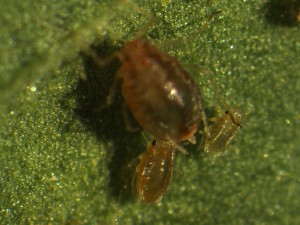Asking About Organic Aphid Management in Tobacco
go.ncsu.edu/readext?412013
en Español / em Português
El inglés es el idioma de control de esta página. En la medida en que haya algún conflicto entre la traducción al inglés y la traducción, el inglés prevalece.
Al hacer clic en el enlace de traducción se activa un servicio de traducción gratuito para convertir la página al español. Al igual que con cualquier traducción por Internet, la conversión no es sensible al contexto y puede que no traduzca el texto en su significado original. NC State Extension no garantiza la exactitud del texto traducido. Por favor, tenga en cuenta que algunas aplicaciones y/o servicios pueden no funcionar como se espera cuando se traducen.
Português
Inglês é o idioma de controle desta página. Na medida que haja algum conflito entre o texto original em Inglês e a tradução, o Inglês prevalece.
Ao clicar no link de tradução, um serviço gratuito de tradução será ativado para converter a página para o Português. Como em qualquer tradução pela internet, a conversão não é sensivel ao contexto e pode não ocorrer a tradução para o significado orginal. O serviço de Extensão da Carolina do Norte (NC State Extension) não garante a exatidão do texto traduzido. Por favor, observe que algumas funções ou serviços podem não funcionar como esperado após a tradução.
English
English is the controlling language of this page. To the extent there is any conflict between the English text and the translation, English controls.
Clicking on the translation link activates a free translation service to convert the page to Spanish. As with any Internet translation, the conversion is not context-sensitive and may not translate the text to its original meaning. NC State Extension does not guarantee the accuracy of the translated text. Please note that some applications and/or services may not function as expected when translated.
Collapse ▲I have recently received a few question about organic aphid management in tobacco, specifically about efficacy of different foliar insecticides. We have done a fair amount of work on organically acceptable insecticides in tobacco, including work on tobacco flea beetles and caterpillar pests, but aphid management with these materials is particularly difficult. Organic materials act differently than conventional materials, and waiting to treat until 10% infestation is likely inappropriate for organic materials.
Therefore, I suggest that organic growers manage aphids as follows:
1. Scout fields at least weekly until topping.
2. When reproducing aphid populations are observed (large wingless aphids are observed surrounded by small wingless aphids), begin treatments of your chosen material (more on that below). Only the upper 1/3 of leaves need to be observed for aphids.
3. Continue with treatments on a weekly basis until aphids are no longer observed or until topping, whichever comes first.
4. Top as soon as feasible. Consider making several topping passes through a field, if feasible.
In regards to selecting a material, because all of them have had essentially marginal activity in our experiments, I’m not too enthusiastic about any of them. Organically acceptable materials recommended for use in tobacco are indicated as OMRI listed in the NC Agricultural Chemicals Manual. At this time, we probably get the best aphid control through topping, which hardens off the leaves, and subsequent contact applications.
More information
Efficacy of organically acceptable pesticides against tobacco flea beetles, 2013 – Arthropod Management Tests
Efficacy of organically acceptable pesticides against key tobacco pests, 2013 – Arthropod Management Tests
Scouting for green peach aphids in tobacco – Tobacco Growers Information Portal



